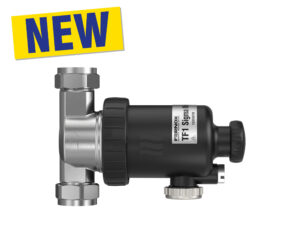
NO SPACE? NO PROBLEM. FERNOX ADDS NEW FILTER TO ITS PRODUCT RANGE
The new sealed and ultra-compact TF1 Sigma Mini, providing a practical filter solution for smaller

The new sealed and ultra-compact TF1 Sigma Mini, providing a practical filter solution for smaller

Employees from Fernox, a Woking based company, volunteered their time on Earth Day, 24th April

Fernox is celebrating its 60th year in 2024. As the world’s first chemical water treatment

The Express Inhibitor Test provides a rapid on-site analysis of the concentration of all Fernox

Fernox Protector F1 265ml gives long-term protection against internal corrosion and limescale formation in central

The TF1 Sigma Mini is a compact high-performance system filter that utilises a powerful neodymium